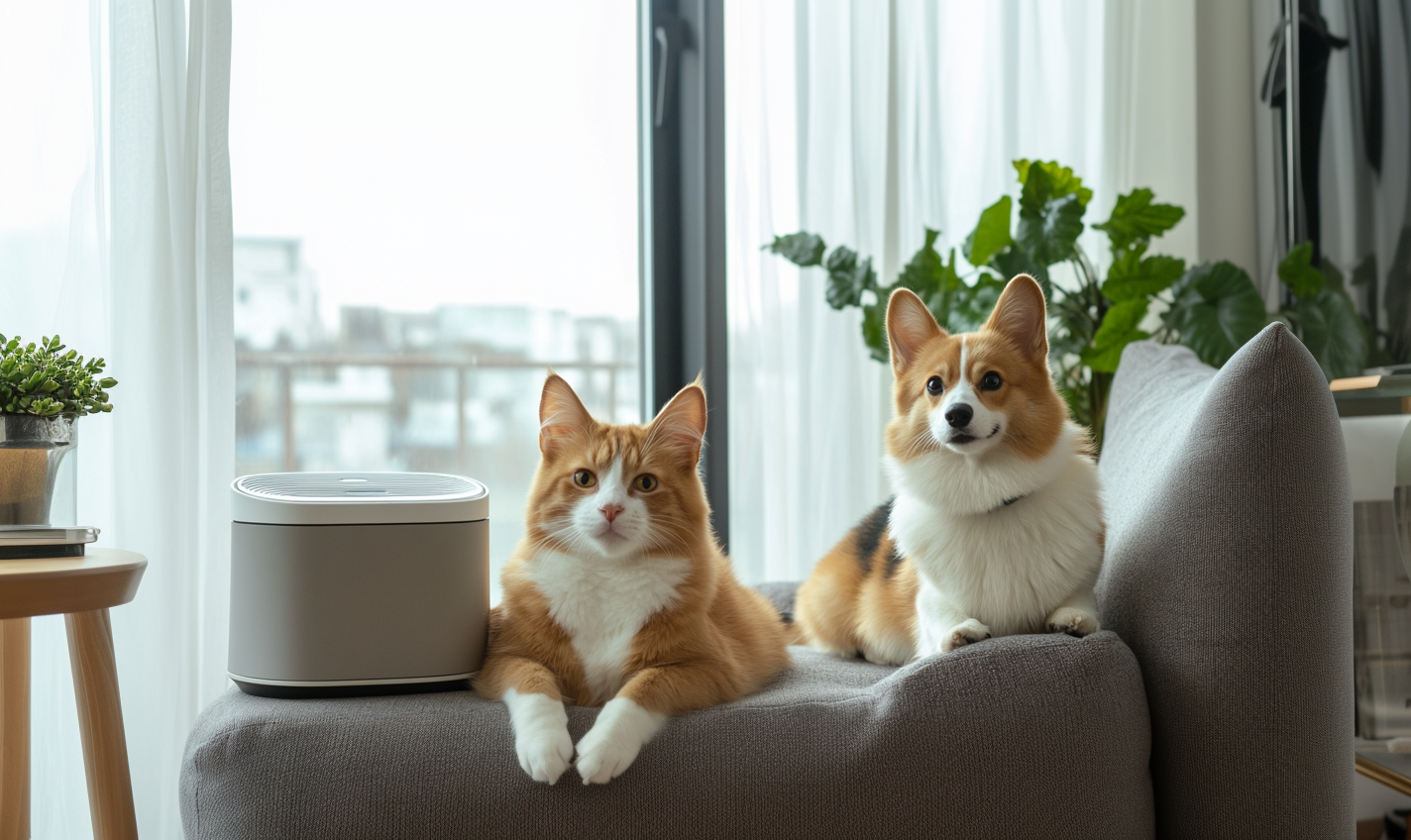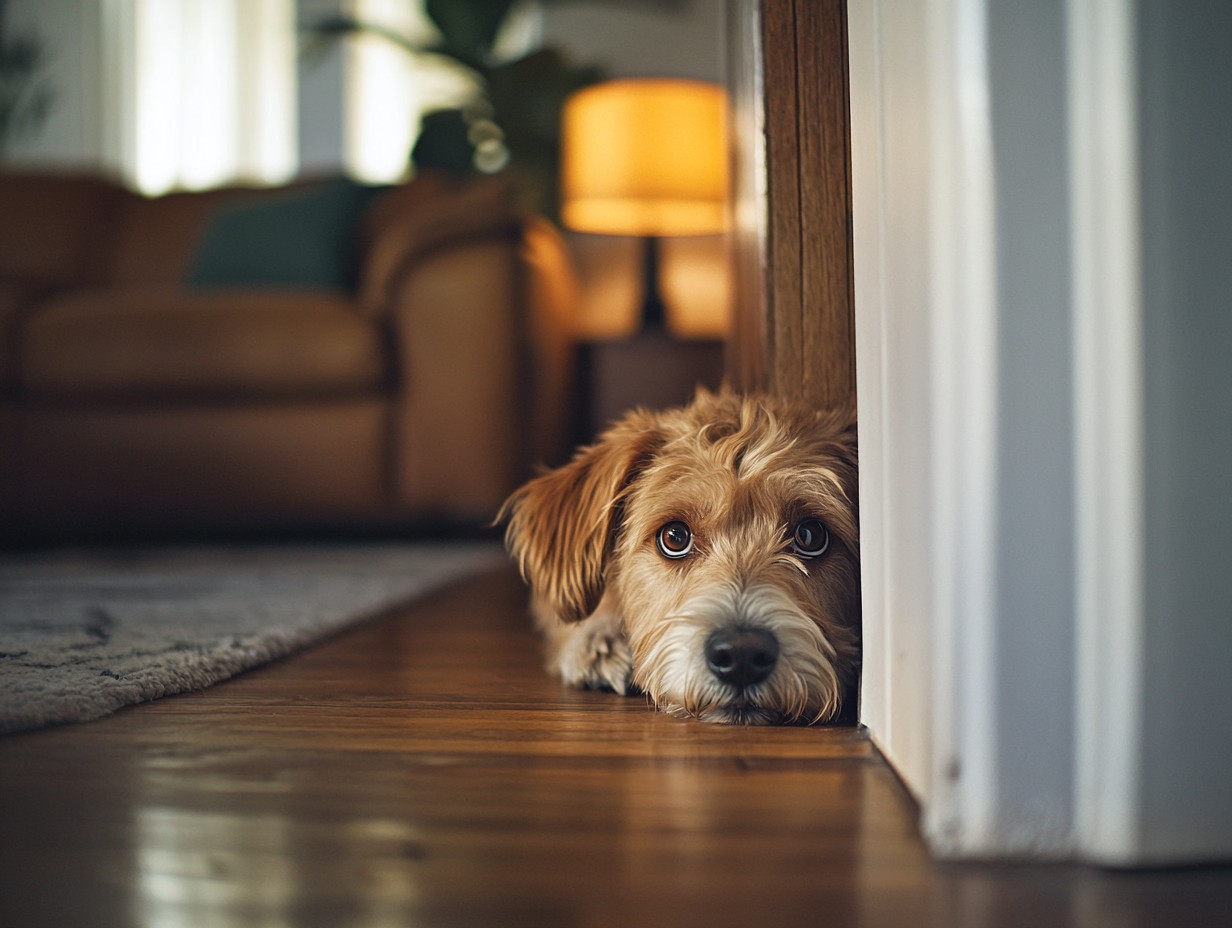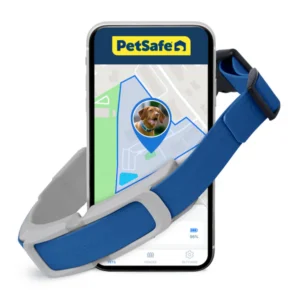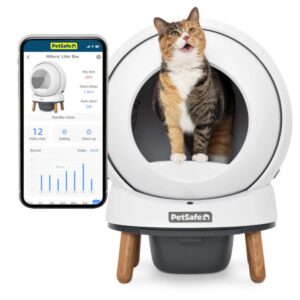Anxiety in pets is more common than you might think, and it can be triggered by anything from loud noises and separation to changes in routine or unfamiliar visitors. Pets experiencing anxiety often display signs like pacing, hiding, excessive barking, or even destructive behavior. While these behaviors can be challenging, the good news is that with the right approach, you can help your pet feel more secure and at ease.
In this guide, we’ll walk you through practical, step-by-step techniques to reduce your pet’s anxiety and recommend calming products to support their journey. By establishing a structured routine, creating a soothing environment, and using the right tools, you’ll be well on your way to helping your furry companion find relief and happiness. Let’s dive in and get started on building the calm your pet deserves!
Understanding Pet Anxiety: What Triggers It?
Before diving into the calming routine, it’s important to understand what may be causing your pet’s anxiety. Pets can’t always communicate their fears directly, but their behavior offers plenty of clues. By observing these patterns, you’ll gain insight into what sets off their anxious responses and when they are most vulnerable.
Here are some common triggers to look for:
- Separation Anxiety: Your pet may become distressed when you leave home, often showing signs like pacing, barking, or destructive behavior. This is especially common in pets that are highly attached to their owners or lack independent activities.
- Noise Sensitivity: Thunderstorms, fireworks, or even household noises like a vacuum can trigger extreme anxiety. Pets with noise sensitivities may shake, hide, or seek comfort in confined spaces.
- Environmental Changes: A move to a new home, the arrival of a new pet, or even the presence of unfamiliar visitors can leave pets feeling unsettled. Their anxiety may manifest in clinginess, hiding, or changes in appetite.
- Lack of Structure: Pets thrive on routine, and inconsistent feeding, exercise, or sleeping schedules can cause confusion and stress, especially in dogs that rely on predictability for comfort.
Cats are particularly sensitive to environmental changes and noise. Sudden household disruptions, like rearranged furniture or visitors, can cause heightened stress. Monitoring hiding spots or changes in litter box behavior can offer clues about their anxiety triggers.

Pro Tip!
Once you identify your pet’s triggers, you can tailor the routine to address their specific needs. Understanding what causes their anxiety not only allows you to prevent potential stressors but also empowers you to create a calming plan that brings relief during even the most stressful moments.
Step 1: Establish a Consistent Daily Routine
A predictable daily routine helps your pet feel safe and secure, reducing anxiety that can arise from uncertainty. Pets, much like humans, are creatures of habit, and knowing what to expect throughout the day can prevent stress before it even begins. When mealtimes, walks, and bedtime follow a regular schedule, it’s easier for your pet to settle into a calm rhythm.
Cats benefit from predictable play and feeding times just as much as dogs. Scheduled interactive playtime helps reduce restlessness and curb stress-induced behaviors like scratching or nighttime meowing.
Start by mapping out your pet’s key activities and sticking to them. Small adjustments, like morning walks or evening bonding time, can make a big difference.
- Morning Routine: Start with a calming walk or play session to burn off excess energy. Physical exercise is critical for relieving stress.
- Midday Break: If possible, provide a midday mental stimulation activity like a food puzzle or interactive toy.
- Evening Wind-Down: Dedicate time for quiet bonding activities like brushing, cuddles, or gentle play to signal the end of the day.
Recommended Product: The PetSafe Smart Feed Automatic Feeder ensures your pet is fed on time even when you’re away, maintaining a predictable schedule that can ease anxiety.
9.3

Score calculated based on:
Exceptional
PetSafe Smart Feed Automatic Feeder
- Wi-Fi enabled control
- App scheduling support
- Low-food alerts
- Dishwasher-safe components
- Customizable meal portions
Step 2: Create a Calming Environment

A calm, safe environment is one of the most effective ways to reduce pet anxiety. Whether your pet is triggered by loud noises or new visitors, having a designated “safe zone” gives them a place to decompress. This space should feel like a sanctuary—comfortable, familiar, and free from stressors.
Environmental factors like lighting, noise, and scent can play a huge role in how relaxed your pet feels. Experiment with soothing elements that help create a peaceful atmosphere.
- Designate a Safe Zone: This could be a crate, a cozy bed, or a quiet room where your pet can retreat when feeling anxious. Cats, in particular, love elevated hiding spots, so consider adding shelves or cat trees where they can observe from above.
- Use Soothing Scents: Products like calming sprays or diffusers with lavender or chamomile can help create a peaceful atmosphere.
- White Noise or Soft Music: Play soothing sounds, especially during triggers like thunderstorms or fireworks. Studies have shown that soft classical music can calm dogs and cats.
Recommended Products:
- Adaptil Calming Diffuser for dogs, mimicking comforting pheromones.
Step 3: Incorporate Calming Treats and Supplements
When used as part of a daily routine or during stressful moments, calming treats and supplements can help take the edge off your pet’s anxiety. They work best when paired with other strategies, such as a stable routine and calming environments. The key is to find the right product for your pet’s specific needs and triggers.
Natural ingredients like valerian root, chamomile, and CBD offer effective, gentle calming effects. You can use these as a long-term anxiety management tool or on an as-needed basis during events like vet visits or thunderstorms.
Cats benefit from calming chews, particularly those containing L-theanine or tryptophan, which help reduce tension without causing sedation.
- Calming Treats: Offer these during stressful events or as part of your pet’s nightly routine.
- CBD Supplements: Hemp-derived CBD can help reduce anxiety without causing sedation, making it great for pets who need to stay alert but calm.
- Digestive Calmers: Anxiety often affects digestion, so consider probiotics that support gut health, which is closely linked to mood regulation.
Our Pick:
VetNaturals Hemp & Hips Plus CBD treats combine calming properties with joint support, making them perfect for older pets experiencing stress.
9.3

Score calculated based on:
Exceptional
Hemp & Hips Plus CBD
- 0% THC
- Made in the USA
- 100% organic-naturally
- Money-back guarantee
- Rich in joint-supporting cannabinoids and terpenes
Step 4: Engage in Physical and Mental Stimulation
Exercise is a powerful stress reliever, not just for physical health but for mental well-being too. Boredom is a common source of pet anxiety, especially for high-energy breeds or pets left home alone for long periods. Keeping your pet’s mind and body active can minimize destructive behavior, such as chewing or barking.
Interactive games, training exercises, and playtime should be part of your daily routine. The goal is to provide enough stimulation to reduce anxiety without overwhelming your pet.
- Daily Walks: For dogs, a long walk provides both physical exercise and sensory stimulation.
- Interactive Toys: Food puzzles, snuffle mats, and treat-dispensing balls keep pets entertained while promoting problem-solving.
- Training Games: Short training sessions can boost confidence, which helps ease anxiety.
Try This:
The PetSafe Automatic Ball Launcher is ideal for high-energy dogs who love fetch. It keeps them busy and burns off excess nervous energy.
Step 5: Practice Positive Reinforcement
Positive reinforcement is a gentle yet powerful way to manage anxiety by teaching your pet to associate calm behavior with rewards. It also helps break the cycle of negative reinforcement, where anxious behaviors like whining or barking are unintentionally encouraged.
Rewarding calm moments, rather than reacting to anxious behaviors, sets your pet up for long-term success. Over time, they’ll learn that remaining calm earns them positive outcomes.
- Reward Calmness: When your pet remains calm during potentially stressful situations, reward them with treats or affection.
- Ignore Anxious Behavior: Don’t reward anxious behaviors like whining or barking, as this can unintentionally reinforce the reaction.
- Use Distraction Techniques: Redirect your pet’s focus to a task they enjoy, like playing with a favorite toy.
Step 6: Explore Calming Wearables
Calming wearables provide physical comfort through gentle pressure, which many pets find soothing. They’re especially useful for dogs with noise sensitivities or those who experience stress during travel.
You don’t have to wait for a stressful event to introduce wearables. In fact, early exposure helps pets associate them with positive experiences, making them more effective.
- ThunderShirts: These snug-fitting shirts are popular for reducing anxiety related to loud noises or separation.
- Calming Collars: Infused with pheromones, these collars provide on-the-go comfort.
Step 7: Consult a Veterinarian if Needed
Not all anxiety can be resolved with routines and products alone. While calming wearables, treats, and structured daily activities work wonders for many pets, some cases require deeper intervention. If you’ve tried multiple techniques and your pet’s anxiety persists or worsens, it’s time to consult a professional.
A veterinarian can help in several ways. First, they’ll rule out any underlying health issues that may be contributing to your pet’s anxiety. Conditions such as pain, thyroid imbalances, or neurological problems can manifest as stress-related behaviors. By identifying these root causes, the vet can provide appropriate treatments that go beyond surface-level management.
In some cases, your veterinarian may recommend behavioral therapy in conjunction with medication. Behavioral therapy focuses on retraining your pet’s response to triggers through desensitization and counter-conditioning techniques. This can be particularly effective for pets with severe separation anxiety or noise sensitivities.
When to See a Vet:
- If your pet’s anxiety disrupts daily life, leading to excessive destructive behaviors, withdrawal, or aggression.
- If symptoms like pacing, trembling, panting, or loss of appetite persist for more than a few days.
- If your pet shows signs of self-harm, such as biting or licking themselves excessively.
Medication Options:
When necessary, your vet may prescribe anti-anxiety medications to help your pet during high-stress periods or as a long-term management solution. These medications include:
- Selective Serotonin Reuptake Inhibitors (SSRIs) such as fluoxetine, commonly used for chronic anxiety.
- Benzodiazepines like diazepam for short-term relief during acute stress (e.g., thunderstorms or fireworks).
- Natural alternatives like prescription-strength calming chews containing L-theanine or CBD.
Medication is often most effective when combined with positive reinforcement and a structured routine. Your vet will work with you to develop a personalized plan, adjusting the dosage or treatments as needed to ensure long-term success.
Pro Tip:
During vet visits, keep your pet calm by bringing familiar items, like a favorite blanket or toy. Consider using a calming pheromone spray in the car and vet’s office to reduce pre-visit anxiety. Certain CBD treats can also be effective.
By seeking professional help, you’ll give your pet the best chance at finding relief and improving their overall quality of life. Never hesitate to reach out—a calm, happy pet is worth the extra effort!
Final Thoughts: Consistency and Patience Are Key
Reducing pet anxiety takes time and patience. By establishing a calming routine, creating a safe environment, and using effective tools like calming treats and wearables, you can help your pet live a more relaxed and happy life. Stay committed, and you’ll soon see the progress you’ve worked so hard to achieve.
You May Also Love...
Keep your dog safe while they explore with top GPS collars and virtual fences. From advanced tracking to adaptable boundaries, find the perfect solution here!
10 Best Dog Food Delivery Services of 2024
You know that choosing the right dog food is absolutely vital to your pup’s health and happiness, but with busy schedules, getting top-quality meals can be a challenge.
Best Self-Cleaning Litter Boxes for Cats
We’ve reviewed the top self-cleaning litter boxes to help you find the perfect one for your cat. We’ve ranked the best options based on performance, design, and ease of use.







